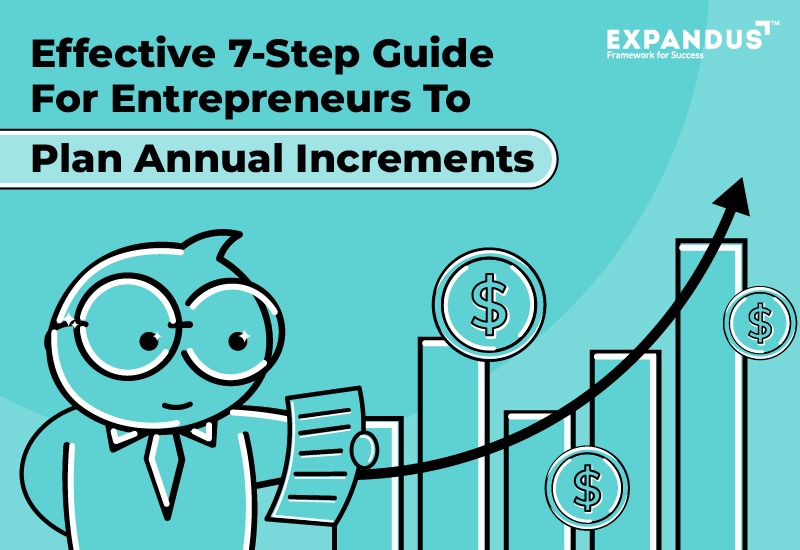Effective 7-Step Guide For Entrepreneurs To Plan Annual Increments
As a business owner, planning annual increments for your team can be a confusing and tedious task. It’s important to understand the impact that increments have on employee satisfaction and retention and to approach the process thoughtfully. In this guide, we’ll explore the steps you can take to plan the perfect annual increments for your team.
Step 1: Establish an Overall Budget for Increments
The first step in planning annual increments is to establish an overall budget for wage increases. This will help you determine the amount of money you have to work with and will serve as a starting point for your calculations. Consider your business’s financial performance over the past year and take into account any projections for the upcoming year. If your profits have grown by 10%, for example, you may be able to allocate 8-12% of your budget to wage increases.
Step 2: Assess Your Employees
Once you have a budget in place, the next step is to assess each of your employees. Divide your staff into three categories: those who perform better than expected, those who perform as expected, and those who perform below expectations. This is an important step because it will help you determine which employees deserve larger increments and which employees may need additional support or training.
Typically, about 15% of employees will be above average and 15% will be below average, with the remaining 70% falling into the average category. This is a general guideline, and you should adjust your numbers based on your staff and their performance.
Step 3: Identify High-Potential Employees
In addition to categorizing your employees based on their performance, it’s important to identify high-potential employees. These are the employees who show the most potential for advancement within your company and could be future leaders. This group should be relatively small, perhaps 5% of your staff.
Step 4: Consider Market Salaries
Another factor to consider when planning annual increments is the market value of your employees. Consider the salaries prevailing in your industry and your local area for employees with similar experience and qualifications. This will give you an idea of what your employees are worth in the current market and can help you determine fair and reasonable increments.
Step 5: Allocate Increments
With all of this information in mind, it’s time to start allocating increments. Start with a general rule of thumb, such as allocating 8% of your budget to wage increases. Then, divide this percentage among your employees based on their performance and potential. For example, you might allocate 12% to high performers, 8% to average performers, and 5% to below-average performers. You may also consider allocating a higher percentage, such as 15%, to your high-potential employees.
Step 6: Check and Adjust as Needed
Finally, review your allocations against the market value data you have gathered and make any necessary adjustments. For example, if an average or above-average employee is earning significantly less or more than their market value, adjust their increment accordingly. Aim to keep these adjustments within 2% or so to avoid disrupting your overall budget.
Step 7: Continuously Monitor and Evaluate
Over time, you may find that your retention of high-performing employees improves and there is some attrition among average performers. This can be a positive outcome, as it can help you continuously improve the quality of your staff. By following this same distribution and increment method, you’ll see a continuous improvement in employee satisfaction and retention.
Conclusion
In conclusion, implementing a proper annual increment system is crucial for retaining high-performing employees and improving overall employee satisfaction. By following the steps outlined in this blog, such as assessing employees based on their performance and market value, and allocating increments accordingly, you can gradually improve the quality of your workforce over time.
By rewarding better-performing employees with higher increments, you will encourage them to continue their exceptional work, while also creating a competitive environment that motivates average performers to strive for improvement. Ultimately, a well-planned annual increment system can lead to increased employee retention, improved job satisfaction, and a better overall work environment.
I have tried to explain everything briefly and effectively. However, if you still want to discuss more how can you effectively plan this out or if you have any other issue you want me to help you with then feel free to reach out.









